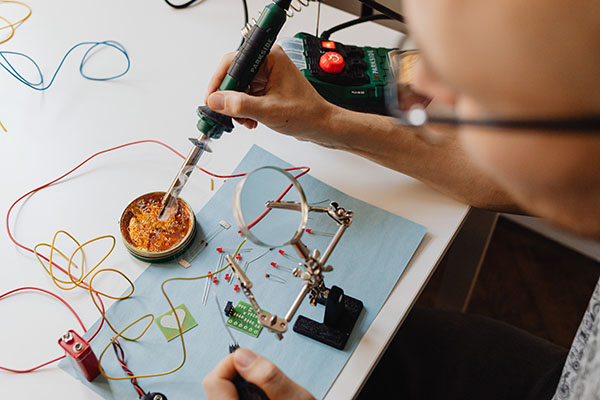
Soldering is a process that required in many production. Sometimes, the quality of soldering directly affects the quality and safety of products. In some industries, such as computers, instruments, home appliances and other industries, the precision of the soldering process is high, and soldering flux has been widely used in the soldering of these industries.

Flux: A chemical substance that helps and promotes the soldering process, and at the same time has a protective effect and prevents oxidation reactions. Flux can be divided into solid, liquid and gas. There are mainly several aspects such as "auxiliary heat conduction", "removal of oxides", "reduction of surface tension of soldered materials", "removal of oil stains on the surface of soldered materials, increase of soldering area", and "prevention of re-oxidation". Two key functions : "removing oxides" and "reducing the surface tension of the material to be soldered".
Soldering flux is divided into lead and lead-free . What is the difference between these?
The so-called lead-free or leaded soldering refers to whether the soldering material used in soldering contains lead. Traditional brazing uses lead-tin alloy solder, which has a low melting point, good fluidity, and good electrical conductivity after soldering, and has been widely popularized. However, lead is a metal harmful to human health, which has caused the topic of lead-free soldering.
1. Lead-free and lead-free are process requirements and are distinguished by different application scopes.
2. Its composition is complex and the classification is diverse.
3. Active agents, film-forming substances, additives, and solvents are the basic components.
4. Lead-free is the trend, it is good for environmental protection, ROHS is an industry standard with different practical scope.
Lead-free flux is a no-cleaning flux with a wide range of applicability, and has excellent performance in the application fields of spray or foam wave soldering and manual dip soldering. The activity of the flux system has been specially designed, even printed circuit boards with average solderability can get good soldering effect, especially suitable for lead-free process. The appropriate solid content in the flux and its internal activation mechanism ensure that there is very little residue after soldering of the circuit board, and the surface of the circuit board is dry and clean. Under the condition of no special demand, the cleaning process can be exempted, thereby saving the production cost of the manufacturer.
1. It is strictly forbidden to mix with other types of flux and thinner
2. Spray cans and spray nozzles should be cleaned frequently.
3. For dip soldering, the flux in the dip soldering tank or foaming tank should be discharged and cleaned after one week of continuous use.
4. For severely oxidized circuit boards or pins, it is recommended to solder after treatment
5. Reasonably adjust the amount of immersion liquid; the amount of immersion liquid for the height of foaming can make the flux evenly distributed on the circuit board, and the IC socket should be carefully adjusted.
6. Soldering stations and cleaning stations should have ventilation.
In fact, no matter which industry or what kind of job you are in, safety is the first priority. The same is true for soldering. We hope that workers engaged in soldering will keep in mind the safety precautions when using lead-free flux, and follow the precautions during work to ensure the quality of work and protect their safety. In addition, what AiXun wants to say is that lead-free flux is a relatively environmentally friendly material. Everyone can increase their awareness of environmental protection and use more environmentally friendly materials, no matter what industry they are in.
More related reading>>>>>
Everything You Need to Know About Soldering Flux
Expert Tips and Tricks for Quality Soldering with Flux
 WhatsApp
WhatsApp